Description of "Tonus" broccoli cabbage and its cultivation

Broccoli "Tonus" is one of the few plants that can grow under the most unfavorable conditions, while giving a good harvest several times per season. The culture is easy to grow, sowing seeds gives 100 percent germination. Eating a vegetable has a beneficial effect on the entire body. Broccoli is especially useful for children and pregnant women who need a lot of vitamins in their diet.
The main characteristics of the variety
Broccoli variety "Tonus" has been known to gardeners for 35 years. Despite the emergence of new varieties and hybrids, the plant does not lose its relevance to this day. The culture is distinguished by a special delicious taste with a slight bitterness, a large composition of vitamins and microelements. Cabbage can be eaten both fresh and thermally processed.
"Tonus" refers to early maturing varieties. Ripening occurs 70-90 days from the moment the first shoots appear. The first crop is harvested in mid-June and the last in October. On average, the weight of one head of cabbage reaches 200 g. Lateral shoots with heads of cabbage grow rather quickly and reach a weight of 50-70 g.
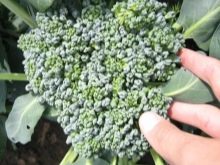
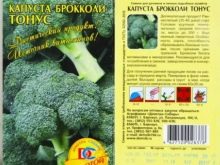
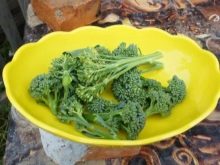
Outwardly, the description of the bushes does not differ in many ways from other varieties of the group. "Tonus" is a small bush, the height of which is 60-90 cm. Leaves of a rich dark green color, medium-sized, with slight wrinkling, their shape is ovoid with truncation.
The inflorescences are of medium density, and you need to harvest quickly, before the onset of abundant flowering, since the plant can quickly turn into bloom. When the heads of cabbage become soft, they are cut off, the presence of several flowers is allowed, this will not affect the taste. Do not wait for the cabbage to turn yellow. Unfortunately, this broccoli is no longer suitable for human consumption.
The temperature index of growing affects the color of the heads of cabbage. If the temperature is low, then they will be brown. Typically, broccoli is dark green in color. During the season, you can collect 2-3 harvests of useful cabbage. From one square. m receive up to 1.5 kg of broccoli.

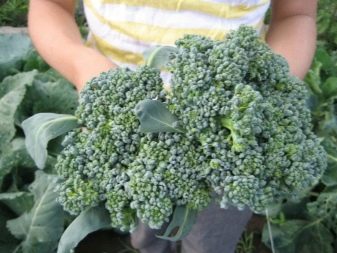
Landing
It is very easy to grow a culture, even a novice summer resident is able to cope with this. To obtain seedlings, 3 planting methods are used:
- seedling;
- seedless, directly into open ground;
- sowing in a greenhouse.
When the site is small, it is better to use a seedling planting method. This way you can get more fruits by gradually cutting them off. Seeds for seedlings are sown in early March.
When using a seedless method or sowing seeds in a greenhouse, planting work is carried out in early May or June. In this case, the crop will ripen by August or September.
Broccoli grows well and bears fruit in slightly alkaline or neutral soils. If the soil is acidic, then add lime, wood ash or ammonium nitrate. Potatoes, carrots, beans and peas are ideal precursors for crop rotation.
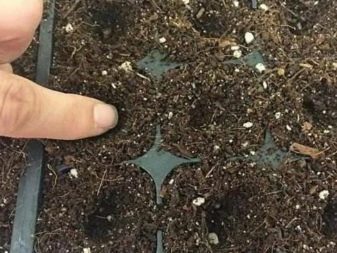
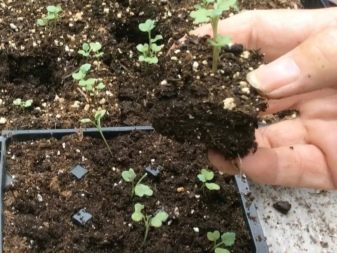
The site for planting is sunny and protected from the winds. The soil is carefully dug up in the fall, removing weeds and roots. It is also recommended to carry out a spring digging, while introducing organic and mineral fertilizers. So future seedlings will develop better.
Seedlings are ready for transplanting when full-fledged 3-4 leaves appear on it, and provided that the threat of recurrent night frosts has passed. When planting, they adhere to the scheme: 50 cm between the bushes and 40 cm between the rows.
The holes are made 25-30 cm deep, adding wood ash, phosphorus and potassium to each. The seedlings are neatly placed, sprinkled with earth to the level of the lower leaves, tamped and watered abundantly. While the plants are undergoing a period of adaptation, the seedlings are watered abundantly so that the soil is constantly moist.
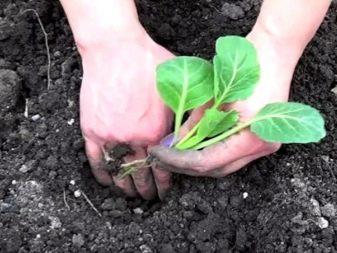
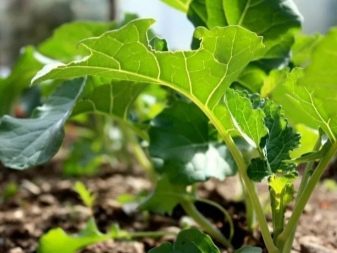
Care
Caring for broccoli cabbage consists in regular feeding, watering and loosening the soil. It is important to take timely measures when the air temperature rises above 25 degrees. The variety does not respond well to high temperature readings. Because of this, yield and taste are reduced.
After successful rooting, watering is carried out once a week. When hot weather sets in and the temperature rises to 25 degrees, the number of waterings should be increased, increasing the frequency to several times a week. Watering is carried out at the root, with warm water, foliage is also sprayed during the drought period. This should be done in the evening.
2 weeks after planting, the seedlings must be fed with rotted mullein or compost in the form of a solution. If the soil is neutral, then urea is also added to increase yields.
The next feeding is carried out 2-3 weeks after the first. During this period, the culture needs ammonium nitrate. By August, the amount of nitrogen is reduced. With the onset of autumn, broccoli needs phosphorus-potassium fertilizers.
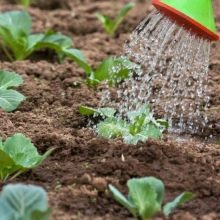

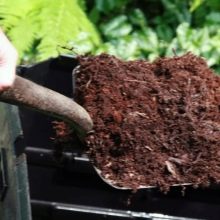
Diseases and pests
With proper agricultural technology, "Tonus" is practically not damaged by diseases and pests. However, it is not always possible to comply with all growing conditions and damage of one nature or another can be noticed on the bushes. In particular, the culture is susceptible to infections such as:
- black leg, they fight with it with a weak solution of potassium permanganate;
- leucorrhoea appears in the form of dark spots on the stem and stalk, the affected plants are completely removed, and the rest are processed with copper sulfate;
- powdery mildew forms a white bloom on the leaves, wood ash copes well with the disease;
- on acidic soil, white rot most often develops; for prevention, nitrogen must be regularly introduced;
- mosaic is a formidable disease, the affected bushes are completely removed, and the rest of the plants are treated with fungicides.
Among pests, aphids, scoops, slugs and snails are especially dangerous for broccoli. Special preparations do an excellent job with them.
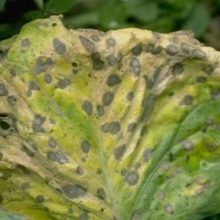















The comment was sent successfully.